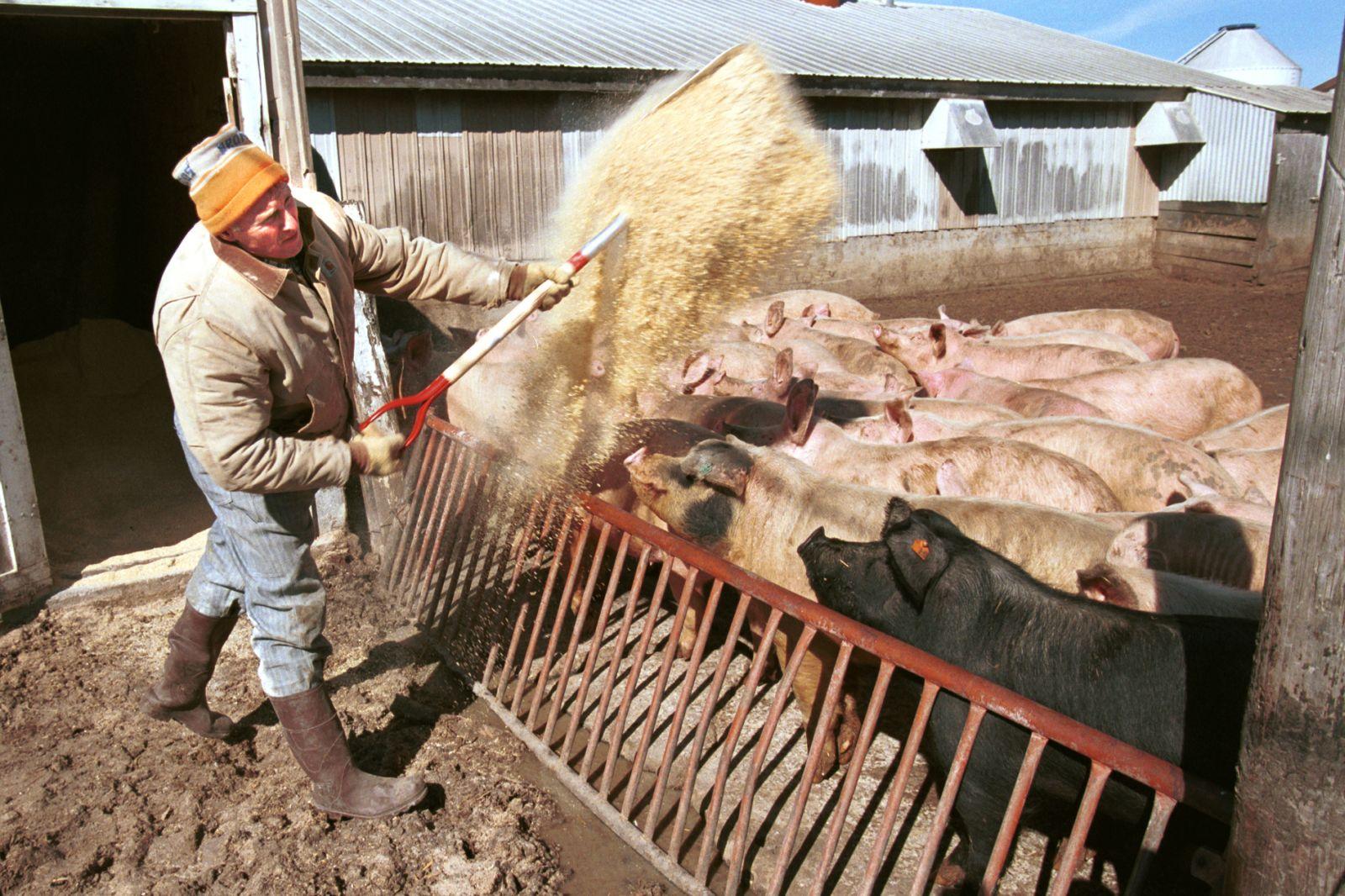 With a pork processing plant under construction, residents of Eagle Grove, IA, see first-hand the jobs and economic growth trade can bring to a community, Politico reports:
With a pork processing plant under construction, residents of Eagle Grove, IA, see first-hand the jobs and economic growth trade can bring to a community, Politico reports:
The plant represents an opportunity not many Midwest towns the size of Eagle Grove are afforded given today's economic realities.
[Mayor Sandy] McGrath said the plant will bring much-needed jobs to the area, which has had a dwindling population for years. From its 1970 height of 4,489 people, the town suffered a 31 percent decline in population to 3,427 in 2016. Now Eagle Grove is expecting at least 200 of the 900 workers the plant will initially employ to find housing in the town. This would give a sorely needed boost to retailers and service providers, as well.Unfortunately the economic situation got dicier after President Donald Trump pulled out of the Trans-Pacific Partnership (TPP) in January. Now, as other nations negotiate trade deals among themselves, American agricultural producers are on the outside looking in:
A POLITICO analysis found that the 11 other TPP countries are now involved in a whopping 27 separate trade negotiations with each other, other major trading powers in the region like China and massive blocs like the EU. Those efforts range from exploratory conversations to deals already signed and awaiting ratification. Seven of the most significant deals for U.S. farmers were either launched or concluded in the five months since the United States withdrew from the TPP.
Other countries will get a competitive advantage over U.S. agricultural producers:
On July 6, the EU, which already exports as much pork to Japan as the United States does, announced political agreement on a new deal that would give European pork farmers an advantage of up to $2 per pound over U.S. exporters under certain circumstances—a move which, if unchecked, is all but certain to create a widening gap between EU exports and those from the United States.
European wine producers, who sold more than $1 billion to Japan between 2014 and 2016, would also see a 15 percent tariff on exports to Japan disappear while U.S. exporters would continue to face that duty at the border. For other products, the deal essentially mirrors the rates negotiated under the TPP, which the United States has surrendered, giving the EU a clear advantage over U.S. farmers.
I bring up this story, because NAFTA negotiations will start up shortly, and American businesses and farmers want good deals that allow them to sell to more customers internationally.
Going into the negotiations, the Trump administration wisely staked a “do no harm” position that preserves market access and rules that have been working well for a few decades. Now, the U.S., Canada, and Mexico have the opportunity to modernize and update the successful 23-year-old agreement to fit how the North American economy operates today.
Take e-commerce for example. Right now, American companies selling products online to Canadian or Mexican consumers have to pay duties on items as small as a t-shirt or a pair of shoes:
A U.S. proposal for Mexico and Canada to vastly raise the value of online purchases that can be imported duty-free from stores like Amazon.com and eBay is emerging as a flashpoint in an upcoming renegotiation of the NAFTA trade deal.
Vulnerable industries like footwear, textiles and bricks and mortar retail in Mexico and Canada are pushing back hard against the proposal by the U.S. trade representative to raise Mexican and Canadian duty-free import limits for e-commerce to the U.S. level of $800, from current thresholds of $50 and C$20, respectively.
Raising the threshold would, as the U.S. Chamber explained, “simplify entry requirements and reduce transaction costs for American small and medium-sized businesses, making them more competitive in the Canadian and Mexican markets.”
Recently Commerce Secretary Wilbur Ross correctly wrote, “[W]hen given a fair chance to compete, Americans can make and sell some of the best, most innovative products in the world.”
Trade with Canada and Mexico supports 14 million American jobs, and if NAFTA is successfully modernized, more opportunities will be available for American companies, farmers, ranchers, and workers. Lowering trade barriers and opening markets will result stronger economic growth, higher-paying jobs, and stronger communities.
